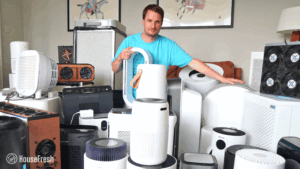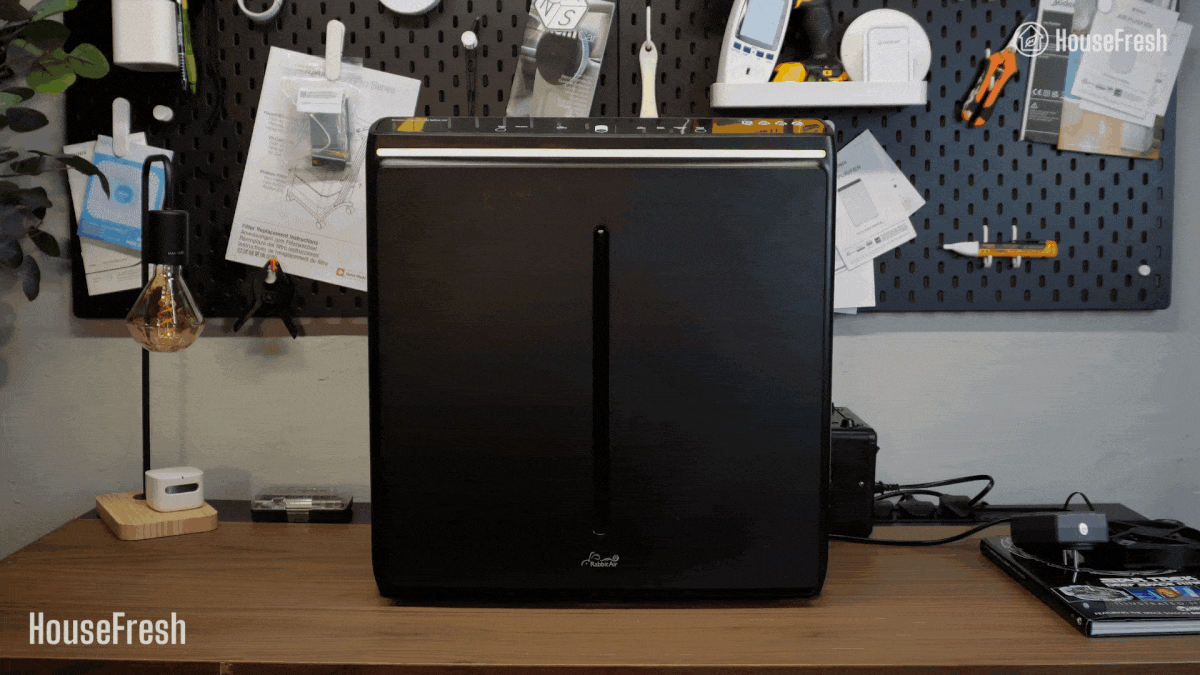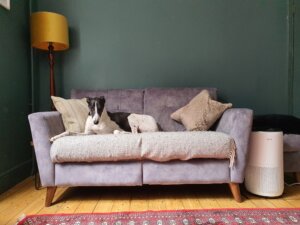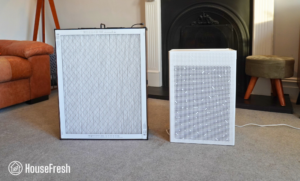The ‘great tariff war’ of 2025 led many people to look for U.S.-made alternatives to products they would usually source from Asia and Europe. And, like many consumer products, most air purifiers are built in China and Korea, with a good number of them being manufactured in Thailand, Malaysia, Sweden and Germany.
Whether you’re looking for a device made in the USA to avoid overpaying in fees or you’re buying American-made products to support manufacturing jobs in the United States, this list is for you.
I am the lead tester here at HouseFresh, so my job is to review and test air purifiers. I only recommend units I have tested and that I have had enough time to use at home, sharing data I’ve gathered myself and insights from my first-hand experience. If you want to learn more about how I test air purifiers, I’ve broken down the full process on this methodology page.
Intro out of the way, let me share the best air purifiers I have tested that are built in the United States.
1. Best for allergies and dust: CleanAirKits Luggable XL-7
All CleanAirKits devices are hand-assembled in and shipped from Missouri, United States.

CleanAirKits is a family business founded in 2022 with the goal of finding a quiet, cheap and efficient air purifier to keep the air in classrooms across America clean and safe after COVID-19 mask mandates were dropped. Every DIY kit sold by CleanAirKits is assembled by hand in Missouri, and that is why they earned a spot on this list.

The Luggable XL-7 is not your traditional air purifier. Inspired by the Corsi-Rosenthal box, the Luggable XL is part of the next generation of air purifiers powered by PC fans.

In terms of the filters, you can choose any 20×25 HVAC filters. CleanAirKits recommends 3M MERV 13 Filtrete MPR1900+ filters and I agree as they are excellent.

Based on my tests, I estimate a PM1 CADR of 323 cfm. This level of air cleaning power allows the Luggable XL-7 can clean the air five (5) times per hour in rooms of up to 390 sq. ft.
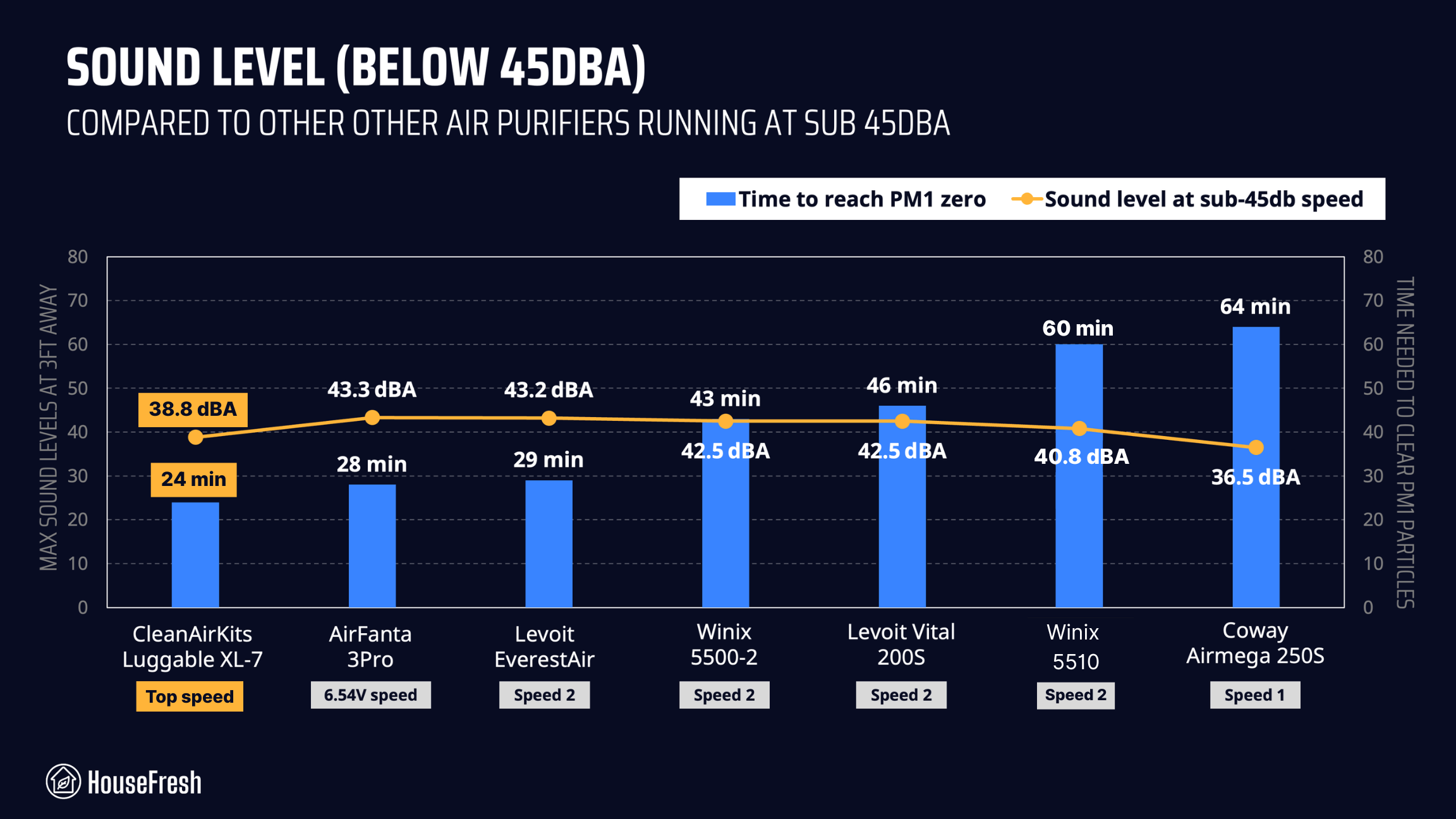
The biggest benefit of the Luggable XL-7 is that it uses PC fans, which are not only whisper quiet but also energy efficient and incredibly powerful. This makes the Luggable a high-CADR device you won’t even hear working in the background, even when at top speed.
What we really like
What we think could be better
| Clean air delivery rate (CADR): | – Top speed PM1 CADR: 260 cfm – Sub-45 dBA PM1 CADR: 260 cfm – Intertek PM2.5: 323 cfm (dust) |
| Filter technology: | MERV 13 (20×25) |
| Recommended room size: | 390 sq. ft. (5 air changes per hour) |
| Dimensions: | 7D x 25W x 20H in (18D x 64W x 51 cm) |
| Weight: | 8 lbs (3.63 kg) |
| Noise level in decibels from 3 ft. away: | Only speed: 38.8 dBA |
| Electricity consumption in watts: | Only speed: 10.5 watts |
| Filter lifespan: | 6-12 months |
| Manufacturer’s warranty: | 1 year |
| Country of origin: | United States |
| Country of manufacture: | United States |
If you opt for the DIY kit to assemble your Luggable XL at home, you will receive a box with everything you need other than the filters. You will get Cooler Master SickleFlow 120 PC fans, four hardboard panels (one with an integrated handle), a power supply, internal pre-tensioner cords, foam tape strips and seven fan guard grills. Check out this video where I show you the steps to build it yourself.
2. Best for smoke and VOCs: Austin Air HealthMate
All Austin Air devices are built at Austin Air System’s manufacturing facility in Buffalo, New York.

The Austin Air HealthMate has an estimated CADR of 150 CFM, making it suitable for rooms of up to 234 sq. ft. (5 air changes per hour). It comes with a medical-grade HEPA filter to remove particles from the air and it’s packed with 15 lbs of activated carbon and zeolite to remove VOCs and odors.
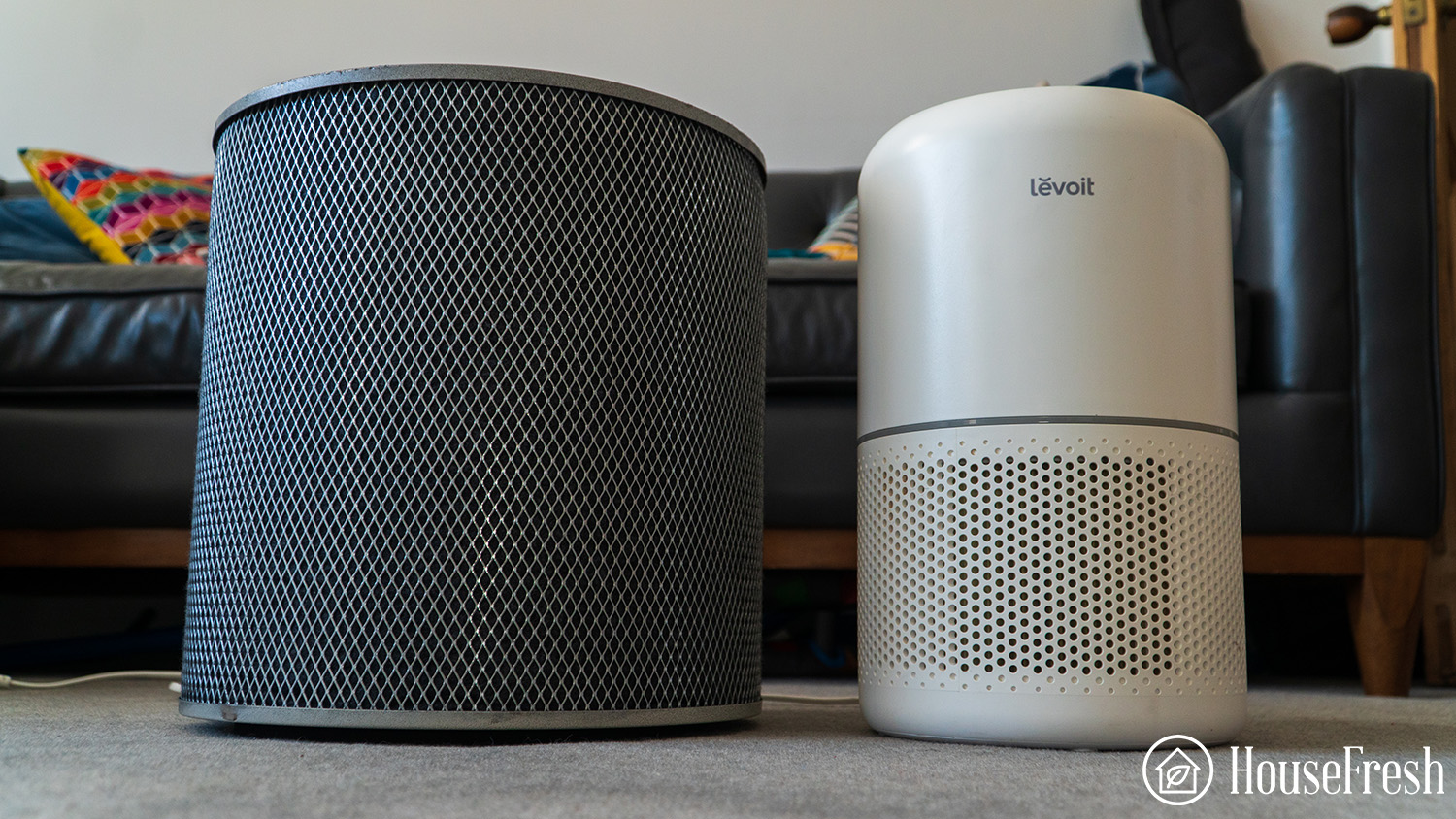
The filter of the HealthMate is bigger than most small air purifiers. However, it’s important to mention that the 15 lbs of carbon restrict airflow and impact this device’s ability to remove particles quickly.
That is why I recommend the Luggable XL-7 if you need an air purifier to remove allergens, as it will be faster at that than the HealthMate.
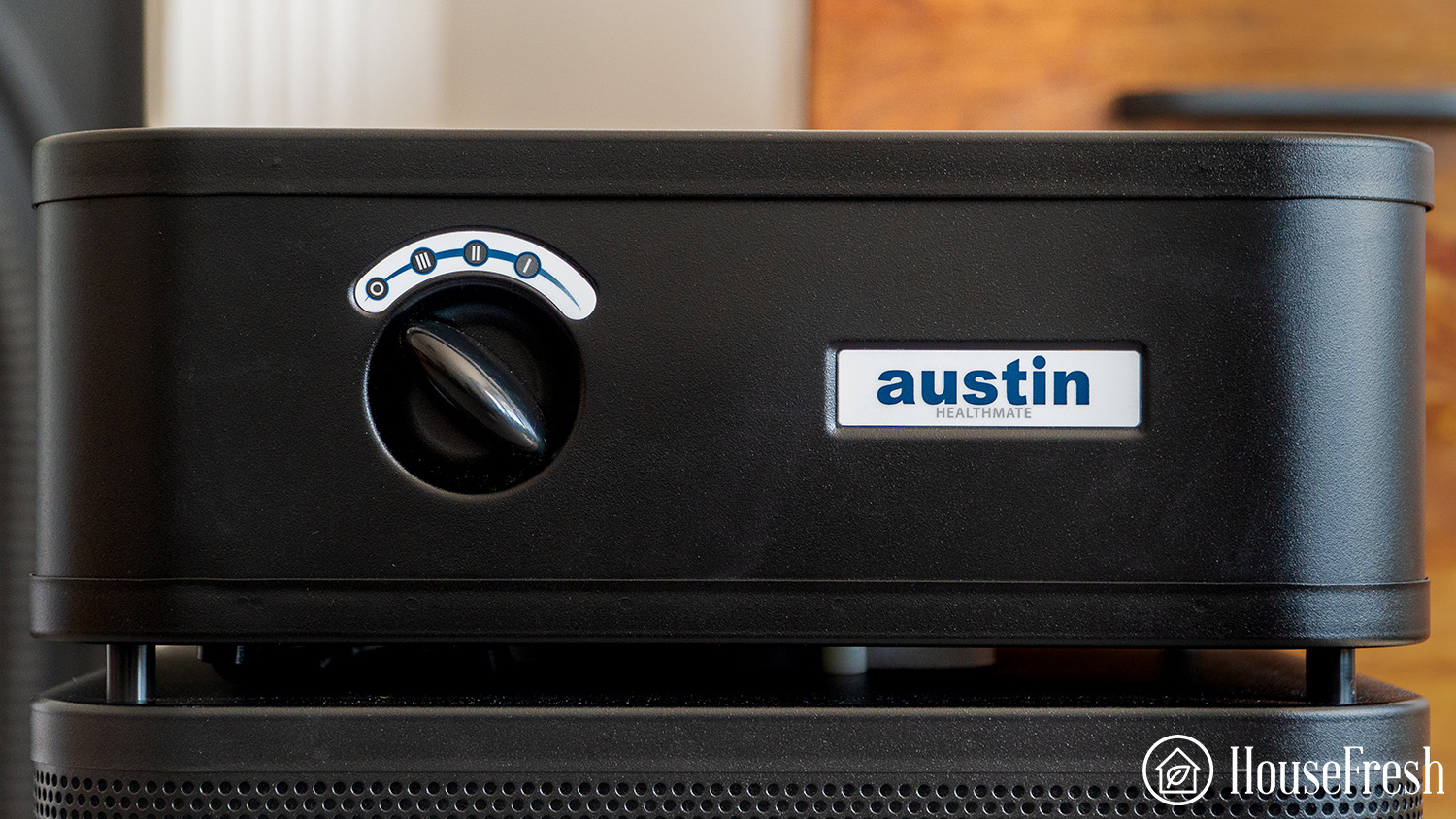
In terms of the control panel of this device, Austin Air decided to include just a single dial for fuss-free operation. This is perfect for those looking for a functional unit without smart functions or app connectivity.
The dial matches the body of the HealthMate, which is completely made out of metal and feels quite industrial.
What we really like
What we think could be better
As all Austin Models are made in the USA, you could also look at the following other air purifier models, such as the Austin Air HealthMate Plus, the Austin Air Bedroom Machine and the Austin Air Allergy Machine.
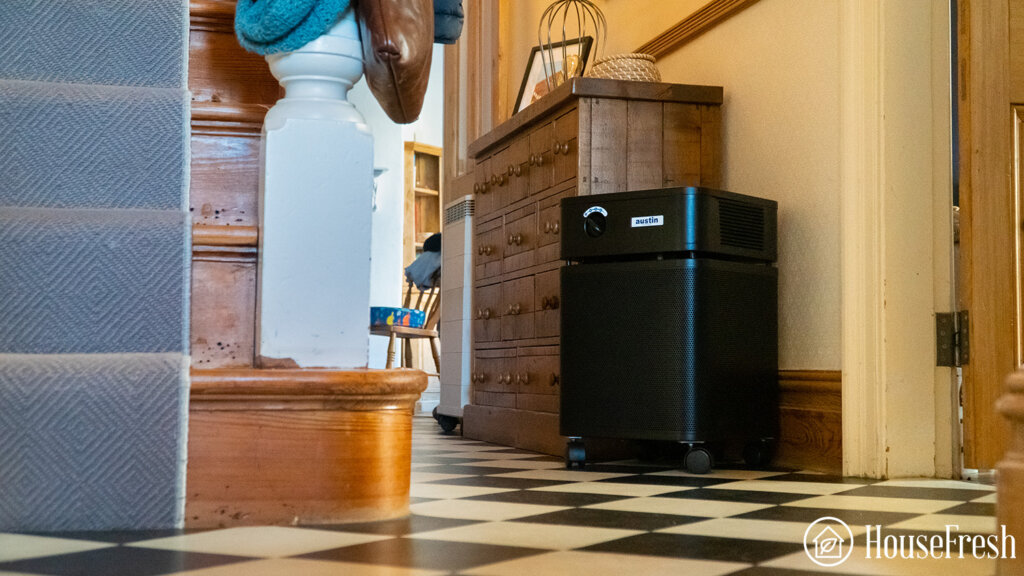
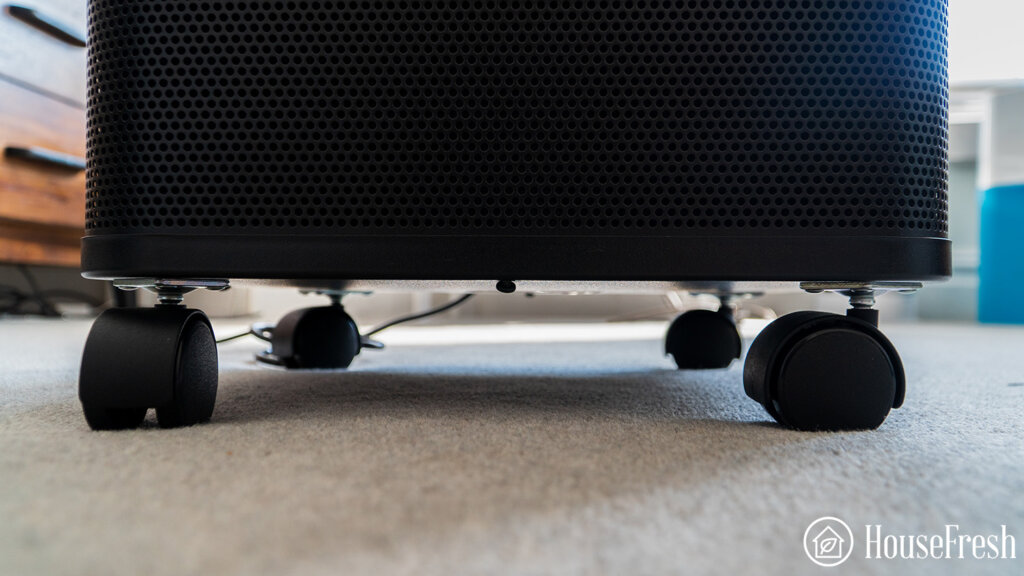

| Clean air delivery rate (CADR): | – Top speed PM1 CADR: 156 cfm – Sub-45 dBA PM1 CADR: 77 cfm – AHAM PM2.5 CADR: 154 cfm (dust) |
| Filter technology: | HEPA particle filter with 15 lb of activated carbon and zeolite mix gas filter |
| Recommended room size: | 234 sq. ft. (5 air changes per hour) |
| Dimensions: | 23H x 14.5W x 14.5D inches (58.4H x 36.8W x 36.8D cm) |
| Weight: | 20.41 lbs (9.26 kg) |
| Noise level in decibels from 3 ft. away: | Speed 1: 42.5 dB Speed 2: 53.2 dB Speed 3: 61.5 dB |
| Electricity consumption in watts: | Standby mode: 0 watts Speed 1: 61.1 watts Speed 2: 85.05 watts Speed 3: 147.6 watts |
| Filter lifespan: | 5 years |
| Manufacturer’s warranty: | 5 years |
| Country of origin: | United States |
| Country of manufacture: | United States (Buffalo, New York) |
3. Best small and portable option: CleanAirKits Triple Exhalaron
All CleanAirKits air purifiers are assembled by hand at their headquarters located in Missouri, USA

The Triple Exhalaron is another device from the team at CleanAirKits, hand-assembled and shipped from their headquarters in MIissouri.
This small air purifier has a CADR of 120 cfm and it is powerful enough to give you five (5) air changes per hour in rooms of up to 192 sq. ft. When we tested its air cleaning performance when running at its highest fan speed, it cleaned our test room in 46 minutes, which is faster than the popular Levoit Core 300, the PuroAir 240 and the Aroeve MK04.

The Triple Exhalaron comes with three CoolerMaster Mobius argb (2400 rpm) PC fans and a purple variable-speed knob you can use to adjust fan speeds.
When running at full power, it generates just 40.5 dBA of noise, which will barely audible in most homes.
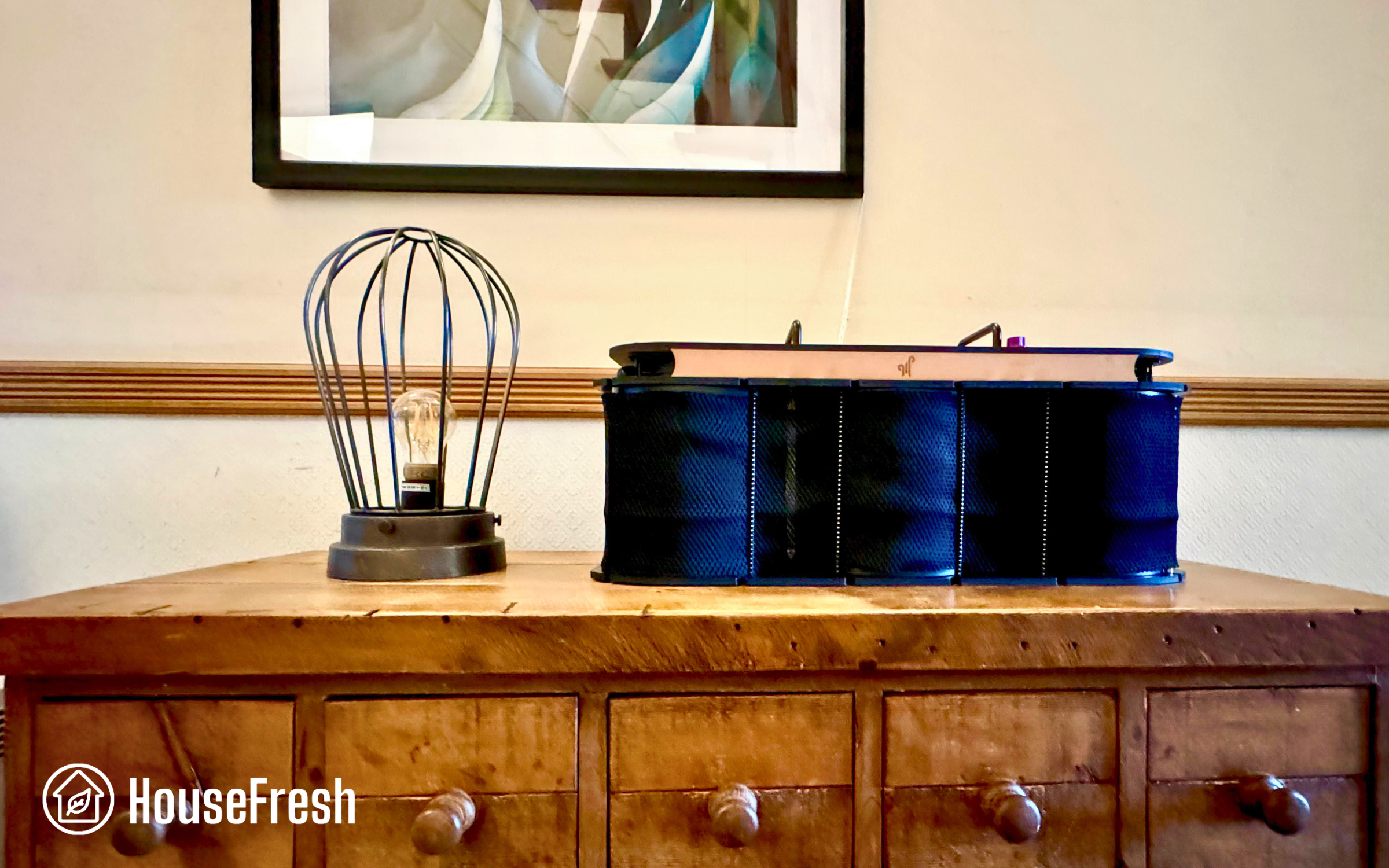
It uses three cylindrical HEPA H11 filters, which don’t restrict airflow as much as a higher HEPA grade like H13 would — this means the air will pass through the filter more times and can lead to higher CADR.
It also comes with two handles at the top, which make it easy to move around the house or take with you in the car.
What we really like
What we think could be better
| Clean air delivery rate (CADR): | – Top speed PM1 CADR: 128 cfm – Sub-45 dBA PM1 CADR: 128 cfm |
| Filter technology: | HEPA H11 with a layer of carbon-impregnated fabric |
| Recommended room size: | 192 sq. ft. (5 air changes per hour) |
| Dimensions: | 22W x 7.25D x 8.5H in (56W x 14D x 22 cm) |
| Weight: | 6 lbs (2.72 kg) |
| Noise level in decibels from 3 ft. away: | Speed 1: 35.2 dBA Speed 2: 37.7 dBA Speed 3: 40.5 dBA |
| Electricity consumption in watts: | Standby: 0.1 watts Speed 1: 1.1 watts Speed 2: 2.8 watts Speed 3: 6 watts |
| Filter lifespan: | 6 months |
| Manufacturer’s warranty: | 1 year |
| Country of origin: | United States |
| Country of manufacture: | United States |
What to look for when buying an air purifier
Consider these key factors to make sure you’re choosing the right unit for your needs
1. Look for high quality particle filters
We have seen excellent performance from MERV 13 filters and HEPA filters. However, it’s important to mention that lower grade HEPA (H10, H11) can offer higher CADR than higher grade HEPA (H13) as it doesn’t restrict airflow as much.
2. Decide if you also need to tackle gases and odors
Whether you live near a busy road affected by traffic fumes or share the house with a smoker, then you should look into an air purifier that can tackle gases as well as particles.
In order to remove gases and VOCs, you will need to find a device that comes with filters packed with activated carbon, ideally pelleted. The higher the amount of carbon, the better the air purifier will be at removing gases and smells from the air.
3. Determine the size of the space your air purifier will need to clean
You need to find an air purifier that will be able to circulate the air multiple times per hour in the room where you want to use it. The Association of Home Appliance manufacturers recommends a minimum of 4.8 air changes per hour and the EPA recommends a minimum of 5.
Once you’ve measured the room where you will place the air purifier, you can use our calculator to find out what CADR you should be looking for to ensure the device you buy will be able to clean the air multiple times per hour:
4. Consider how opting for a made-in-USA device will impact its price
Like many goods, air purifiers made in the United States often have a premium price tag. You must opt for a unit that meets the minimum requirement for your space without compromising on room coverage or filtration.
If you find that no suitable options are made in the USA within your budget, look for options that may be designed here yet are manufactured overseas, as this will usually reduce the cost considerably.
5. Beware of how much energy the air purifier consumes
As the cost of living rises and energy prices continue to fluctuate, it’s important to understand what you will expect to pay when using an air purifier before taking the plunge. Using our energy cost calculator, you can enter the unit’s wattage and receive an approximate cost to avoid any nasty surprises when your energy bills arrive.
Common questions about American-made air purifiers
Regarding manufacturing, China has very high-quality factories and lower production costs, making it hard for US companies to build their goods on US soil. This has been happening across various industries for some time, but if you want to read more about it, check out this Proquest study.
You’ll also find that eastern technology hubs such as Beijing and Seoul are somewhat ahead of the game regarding air quality, having needed a solution to polluted air due to their increasing industrialization and booming populations over the years.
Most air purifiers are made in China due to lower costs associated with production. Levoit, Blueair, Medify and Honeywell are headquartered in the United States, but their factories are based in China.
Air pollution is increasingly on the radar for many people in the USA. And for good reason, too. Whether affected by high traffic or industrial areas that emit harmful fumes, the toxic smoke created when wildfires strike or simply the desire for a healthier environment in your home, free from dust, allergens or odor. There are plenty of factors that negatively impact air quality in American homes.
Using an air purifier in your home will protect yourself and your loved ones from breathing in these harmful pollutants daily. Many of which can contribute to health concerns in the long run.
Air pollution is usually invisible to the naked eye, so it can be easy to turn our attention elsewhere. However, the particulate matter from burning fossil fuels, agriculture, construction and wildfires contribute to 100,000 deaths in the USA annually. Other common pollutants found in the home, such as bacteria, viruses, mold and allergens, directly affect millions more, all of which can kill any vulnerable person.
Wrapping up
Opting for a purifier made in the USA is a great way to guarantee you’ll be purchasing a purifier made and designed to tackle the challenges we experience in the United States, while being made to the highest standard by American workers.
If the options on these page are outside of your budget or if you couldn’t find a device that matches what you were looking for, just drop a comment below and I’ll get back to you with more recommendations as soon as I can.


